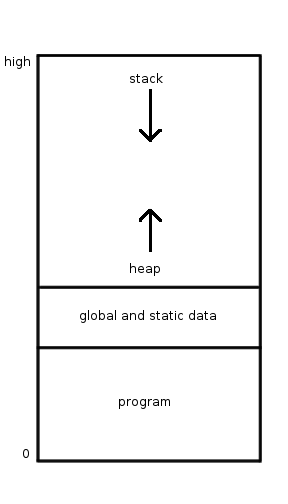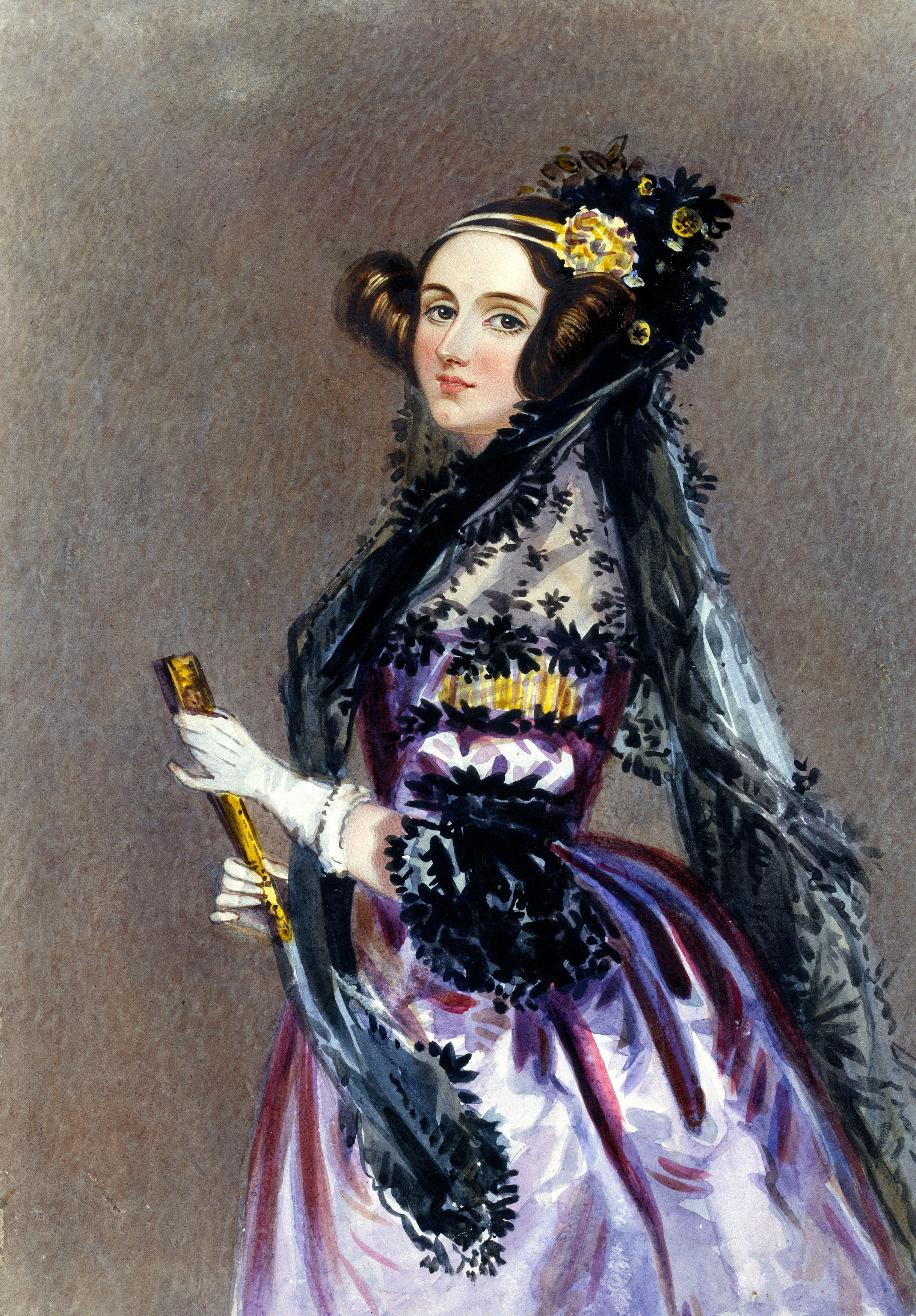|
Pascal (programming Language)
Pascal is an imperative and procedural programming language, designed by Niklaus Wirth as a small, efficient language intended to encourage good programming practices using structured programming and data structuring. It is named after French mathematician, philosopher and physicist Blaise Pascal. Pascal was developed on the pattern of the ALGOL 60 language. Wirth was involved in the process to improve the language as part of the ALGOL X efforts and proposed a version named ALGOL W. This was not accepted, and the ALGOL X process bogged down. In 1968, Wirth decided to abandon the ALGOL X process and further improve ALGOL W, releasing this as Pascal in 1970. On top of ALGOL's scalars and arrays, Pascal enables defining complex datatypes and building dynamic and recursive data structures such as lists, trees and graphs. Pascal has strong typing on all objects, which means that one type of data cannot be converted to or interpreted as another without explicit conversions ... [...More Info...] [...Related Items...] OR: [Wikipedia] [Google] [Baidu] |
Imperative Programming
In computer science, imperative programming is a programming paradigm of software that uses Statement (computer science), statements that change a program's state (computer science), state. In much the same way that the imperative mood in natural languages expresses commands, an imperative program consists of command (computing), commands for the computer to perform. Imperative programming focuses on describing ''how'' a program operates step by step (with general order of the steps being determined in source code by the placement of statements one below the other), rather than on high-level descriptions of its expected results. The term is often used in contrast to declarative programming, which focuses on ''what'' the program should accomplish without specifying all the details of ''how'' the program should achieve the result. Procedural programming Procedural programming is a type of imperative programming in which the program is built from one or more procedures (also termed s ... [...More Info...] [...Related Items...] OR: [Wikipedia] [Google] [Baidu] |
GNU Pascal
GNU Pascal (GPC) is a Pascal programming language, Pascal compiler composed of a frontend to GNU Compiler Collection (GCC), similar to the way Fortran and other languages were added to GCC. GNU Pascal is International Organization for Standardization, ISO 7185 compatible, and it implements most of the ISO 10206 Extended Pascal standard. The major advantage of piggybacking GNU Pascal on the GCC compiler is that it is instantly Porting, portable to any platform the GCC compiler supports. However since GPC is a frontend, it does have to adapt if major changes are done to GCC (like a major new version). Typically, new major versions are adopted only slowly (still mostly at 3.x, with 4.x experimental builds). This is probably one of the reasons why developers are looking at a C targeting backend. In July 2010 a developepublicly asked opinion(it vanished from the web between July 2014 and June 2015) on the future of GNU Pascal, due to developer shortage and maintenance issues as a GCC p ... [...More Info...] [...Related Items...] OR: [Wikipedia] [Google] [Baidu] |
Modula-2
Modula-2 is a structured, procedural programming language developed between 1977 and 1985/8 by Niklaus Wirth at ETH Zurich. It was created as the language for the operating system and application software of the Lilith personal workstation. It was later used for programming outside the context of the Lilith. Wirth viewed Modula-2 as a successor to his earlier programming languages Pascal and Modula. The main concepts are: # The module as a compiling unit for separate compiling # The coroutine as the basic building block for concurrent processes # Types and procedures that allow access to machine-specific data The language design was influenced by the Mesa language and the Xerox Alto, both from Xerox PARC, that Wirth saw during his 1976 sabbatical year there. Page 4. The computer magazine ''Byte'' devoted the August 1984 issue to the language and its surrounding environment. Wirth created the Oberon series of languages as the successor to Modula-2, while others (particularl ... [...More Info...] [...Related Items...] OR: [Wikipedia] [Google] [Baidu] |
Modula
The Modula programming language is a descendant of the Pascal language. It was developed in Switzerland, at ETH Zurich, in the mid-1970s by Niklaus Wirth, the same person who designed Pascal. The main innovation of Modula over Pascal is a module system, used for grouping sets of related declarations into program units; hence the name ''Modula''. The language is defined in a report by Wirth called ''Modula. A language for modular multiprogramming'' published 1976. Modula was first implemented by Wirth on a PDP-11. Very soon, other implementations followed, most importantly, the compilers developed for University of York Modula, and one at Philips Laboratories named PL Modula, which generated code for the LSI-11 microprocessor A microprocessor is a computer processor (computing), processor for which the data processing logic and control is included on a single integrated circuit (IC), or a small number of ICs. The microprocessor contains the arithmetic, logic, a . ... [...More Info...] [...Related Items...] OR: [Wikipedia] [Google] [Baidu] |
Object Pascal
Object Pascal is an extension to the programming language Pascal (programming language), Pascal that provides object-oriented programming (OOP) features such as Class (computer programming), classes and Method (computer programming), methods. The language was originally developed by Apple Inc., Apple Computer as ''Clascal'' for the Apple Lisa, Lisa Workshop development system. As Lisa gave way to Mac (computer), Macintosh, Apple collaborated with Niklaus Wirth, the author of Pascal, to develop an officially standardized version of Clascal. This was renamed Object Pascal. Through the mid-1980s, Object Pascal was the main programming language for early versions of the MacApp application framework. The language lost its place as the main development language on the Mac in 1991 with the release of the C++-based MacApp 3.0. Official support ended in 1996. Gen Digital, Symantec also developed a compiler for Object Pascal for their Think Pascal product, which could compile programs muc ... [...More Info...] [...Related Items...] OR: [Wikipedia] [Google] [Baidu] |
Java (programming Language)
Java is a High-level programming language, high-level, General-purpose programming language, general-purpose, Memory safety, memory-safe, object-oriented programming, object-oriented programming language. It is intended to let programmers ''write once, run anywhere'' (Write once, run anywhere, WORA), meaning that compiler, compiled Java code can run on all platforms that support Java without the need to recompile. Java applications are typically compiled to Java bytecode, bytecode that can run on any Java virtual machine (JVM) regardless of the underlying computer architecture. The syntax (programming languages), syntax of Java is similar to C (programming language), C and C++, but has fewer low-level programming language, low-level facilities than either of them. The Java runtime provides dynamic capabilities (such as Reflective programming, reflection and runtime code modification) that are typically not available in traditional compiled languages. Java gained popularity sh ... [...More Info...] [...Related Items...] OR: [Wikipedia] [Google] [Baidu] |
Go (programming Language)
Go is a high-level programming language, high-level general purpose programming language that is static typing, statically typed and compiled language, compiled. It is known for the simplicity of its syntax and the efficiency of development that it enables by the inclusion of a large standard library supplying many needs for common projects. It was designed at Google in 2007 by Robert Griesemer, Rob Pike, and Ken Thompson, and publicly announced in November of 2009. It is syntax (programming languages), syntactically similar to C (programming language), C, but also has memory safety, garbage collection (computer science), garbage collection, structural type system, structural typing, and communicating sequential processes, CSP-style concurrency (computer science), concurrency. It is often referred to as Golang to avoid ambiguity and because of its former domain name, golang.org, but its proper name is Go. There are two major implementations: * The original, Self-hosting (compi ... [...More Info...] [...Related Items...] OR: [Wikipedia] [Google] [Baidu] |
Component Pascal
Component Pascal is a programming language in the tradition of Niklaus Wirth's Pascal, Modula-2, Oberon and Oberon-2. It bears the name of the language Pascal and preserves its heritage, but is incompatible with Pascal. Instead, it is a minor variant and refinement of Oberon-2 with a more expressive type system and built-in string support. Component Pascal was originally named Oberon/L, and was designed and supported by a small ETH Zürich spin-off company named Oberon microsystems. They developed an integrated development environment (IDE) named BlackBox Component Builder. Since 2014, development and support has been taken over by a small group of volunteers. The first version of the IDE was released in 1994, as ''Oberon/F''. At the time, it presented a novel approach to graphical user interface (GUI) construction based on editable forms, where fields and command buttons are linked to exported variables and executable procedures. This approach bears some similarity to the cod ... [...More Info...] [...Related Items...] OR: [Wikipedia] [Google] [Baidu] |
C Sharp (programming Language)
C# ( pronounced: C-sharp) ( ) is a general-purpose high-level programming language supporting multiple paradigms. C# encompasses static typing, strong typing, lexically scoped, imperative, declarative, functional, generic, object-oriented (class-based), and component-oriented programming disciplines. The principal inventors of the C# programming language were Anders Hejlsberg, Scott Wiltamuth, and Peter Golde from Microsoft. It was first widely distributed in July 2000 and was later approved as an international standard by Ecma (ECMA-334) in 2002 and ISO/ IEC (ISO/IEC 23270 and 20619) in 2003. Microsoft introduced C# along with .NET Framework and Microsoft Visual Studio, both of which are technically speaking, closed-source. At the time, Microsoft had no open-source products. Four years later, in 2004, a free and open-source project called Microsoft Mono began, providing a cross-platform compiler and runtime environment for the C# programming language. A decad ... [...More Info...] [...Related Items...] OR: [Wikipedia] [Google] [Baidu] |
C/AL
C/AL (Client/server Application Language) was the programming language used within C/SIDE the Client/Server Integrated Development Environment in Microsoft Dynamics NAV (formerly known as Navision Attain) and Microsoft Dynamics 365 Business Central up until (and including) version 14. It has been replaced by AL. C/AL is a Database specific programming language, and is primarily used for retrieving, inserting and modifying records in a Navision database. C/AL resembles the Pascal language on which it is based. The original C/AL compiler was written by Michael Nielsen.Studebaker, David,Programming Microsoft Dynamics NAV 2009" p. 8 (2009) Examples Hello World This is the classic Hello World example. Since the C/SIDE (Client/Server Integrated Development Environment) does not have a console to output text, this example is made using a dialog box as the visual interface. MESSAGE('hello, world!'); Filtering and retrieving record Variables in C/AL are not defined throu ... [...More Info...] [...Related Items...] OR: [Wikipedia] [Google] [Baidu] |
Ada (programming Language)
Ada is a structured, statically typed, imperative, and object-oriented high-level programming language, inspired by Pascal and other languages. It has built-in language support for '' design by contract'' (DbC), extremely strong typing, explicit concurrency, tasks, synchronous message passing, protected objects, and non-determinism. Ada improves code safety and maintainability by using the compiler to find errors in favor of runtime errors. Ada is an international technical standard, jointly defined by the International Organization for Standardization (ISO), and the International Electrotechnical Commission (IEC). , the standard, ISO/IEC 8652:2023, is called Ada 2022 informally. Ada was originally designed by a team led by French computer scientist Jean Ichbiah of Honeywell under contract to the United States Department of Defense (DoD) from 1977 to 1983 to supersede over 450 programming languages then used by the DoD. Ada was named after Ada Lovelace (1815–185 ... [...More Info...] [...Related Items...] OR: [Wikipedia] [Google] [Baidu] |
Simula
Simula is the name of two simulation programming languages, Simula I and Simula 67, developed in the 1960s at the Norwegian Computing Center in Oslo, by Ole-Johan Dahl and Kristen Nygaard. Syntactically, it is an approximate superset of ALGOL 60, and was also influenced by the design of SIMSCRIPT. Simula 67 introduced objects, classes, inheritance and subclasses, virtual procedures, coroutines, and discrete event simulation, and featured garbage collection. Other forms of subtyping (besides inheriting subclasses) were introduced in Simula derivatives. Simula is considered the first object-oriented programming language. As its name suggests, the first Simula version by 1962 was designed for doing simulations; Simula 67 though was designed to be a general-purpose programming language and provided the framework for many of the features of object-oriented languages today. Simula has been used in a wide range of applications such as simulating very-large-scale inte ... [...More Info...] [...Related Items...] OR: [Wikipedia] [Google] [Baidu] |



